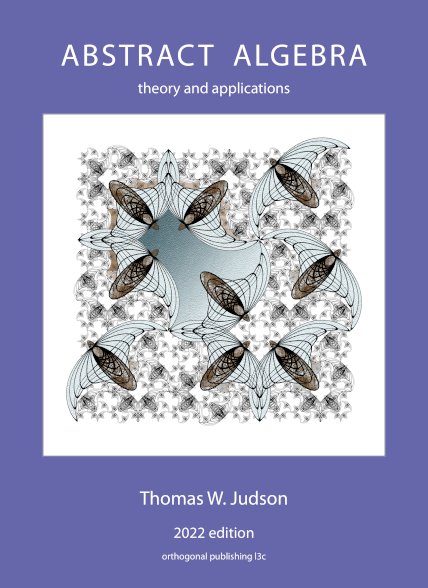Section 9.1 Definition and Examples
Two groups
Example 9.2.
Example 9.3.
Example 9.4.
The groups
An isomorphism
The map
Example 9.5.
Even though
However,
Theorem 9.6.
Proof.
Assertions (1) and (2) follow from the fact that
(3) Suppose that
We are now in a position to characterize all cyclic groups.
Theorem 9.7.
All cyclic groups of infinite order are isomorphic to
Proof.
Let
To show that
Theorem 9.8.
Proof.
Let
Corollary 9.9.
Proof.
The proof is a direct result of Corollary 6.12.
The main goal in group theory is to classify all groups; however, it makes sense to consider two groups to be the same if they are isomorphic. We state this result in the following theorem, whose proof is left as an exercise.
Theorem 9.10.
The isomorphism of groups determines an equivalence relation on the class of all groups.
Hence, we can modify our goal of classifying all groups to classifying all groups up to isomorphism; that is, we will consider two groups to be the same if they are isomorphic.
Subsection Cayley’s Theorem
Cayley proved that if
Example 9.11.
Theorem 9.12. Cayley.
Every group is isomorphic to a group of permutations.
Proof.
Let
Hence,
Now we are ready to define our group
We must show that
Also,
and
We can define an isomorphism from
It is also one-to-one, because if
Hence,
Subsection Historical Note
Arthur Cayley was born in England in 1821, though he spent much of the first part of his life in Russia, where his father was a merchant. Cayley was educated at Cambridge, where he took the first Smith’s Prize in mathematics. A lawyer for much of his adult life, he wrote several papers in his early twenties before entering the legal profession at the age of 25. While practicing law he continued his mathematical research, writing more than 300 papers during this period of his life. These included some of his best work. In 1863 he left law to become a professor at Cambridge. Cayley wrote more than 900 papers in fields such as group theory, geometry, and linear algebra. His legal knowledge was very valuable to Cambridge; he participated in the writing of many of the university’s statutes. Cayley was also one of the people responsible for the admission of women to Cambridge.

